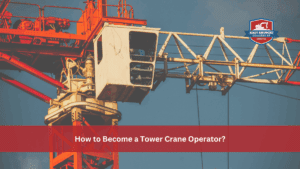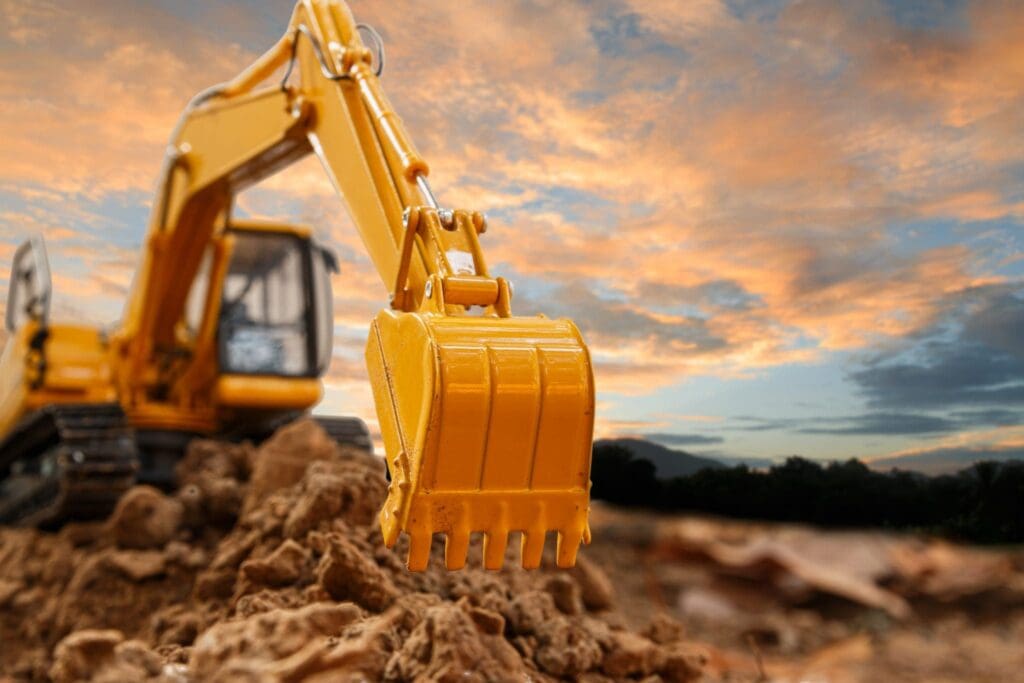When working on construction sites and projects alike, excavators can prove to be useful machines. These versatile pieces of heavy machinery make jobs easier and more efficient. Knowing what type of excavator to use for the job and choosing the right excavator size at hand is important for heavy machinery operators. Continue reading to learn about the types to choose from and the different factors to consider when choosing an excavator for a job.
Table of Contents
Excavator Usage and Types
Excavators are made for hauling and heavy-duty digging tasks. These tasks include breaking ground, digging trenches, and crushing and lifting heavy materials. Excavators promote efficiency and productivity on construction sites and lower costs.
There are three sizes of excavators. The size class an excavator falls into depends on its weight.
Mini
- Weigh less than seven metric tons
- Have more precision
- Easily transported
- More fuel efficient
- Great for landscaping, digging trenches
Standard
- Weigh between seven and 45 metric tons
- Have more power and hauling capacity
- Easy to customize with additional tools
- Used on commercial construction sites
Large
- Weigh more than 45 metric tons
- Useful for handling big projects
- Trickier to transport and store
- Used on large demolition projects and major construction sites
In addition to coming in these three sizes, there is a wide variety of excavator types to meet different job demands.
Standard
The most commonly seen excavator is the standard or conventional. It has a boom, stick, and bucket arm on the front of the machine. The cab rests on parallel tracks that have traction for moving on various terrain. The cab itself can rotate 360 degrees, allowing for ease of use for the operator.
Used for: Construction sites, landscaping or farming, mining, and forestry
Long-Reach
This excavator is a variation of the standard type and features an extended boom and arm. This allows them to work in hard-to-access areas.
Used for: Demolition sites that precision
Wheeled
This is also a variation of the standard excavator but features wheels rather than tracks. The wheels offer easy transportation and more speed on sites.
Used for: jobs on hard terrains like concrete or asphalt
Backhoe
On backhoes, the boom attachment is located on the back instead of the front. The front features a large bucket or blade that can push, level, and move objects. The arms are only able to rotate 200 degrees, not 360 like on a standard excavator.
Used for: construction, landscaping, and mining
Dragline
This type drags a bucket across the material’s surface to excavate using ropes and chains. The bucket hangs from the boom and is lifted using ropes. To release the bucket and dump the materials, the excavator rotates.
Used for: mining, dredging canals, and civil engineering projects
Hydraulic Shovels
Also referred to as power shovels, these feature a lifting arm and large bucket that excavates heavy materials.
Used for: mining and excavating jobs
Suction
This is the rarest type of excavator. High-pressure water loosens materials, while the edge of a suction pipe with sharp teeth breaks up then suctions the material.
Used for: locating underground utilities is where precision and safety are of the utmost importance
Read our Recent Heavy Equipment Posts:

How to Become a Tower Crane Operator?
Tower crane operation is a specialized career that requires technical training, physical readiness, and nationally recognized certification. It’s a path well-suited for those who want

Checklist for Setting Up a Self-Erecting Tower Crane
As the name suggests, self-erecting tower cranes take some of the hassle out of assembling cranes the size of skyscrapers. However, every operator still needs

How To Become an HVAC Technician?
If you prefer working with your hands rather than being stuck at a desk, a career in HVAC might be a great fit for you.
Choosing the Right Excavator for the Job
Picking the most appropriate excavator for each job is important to completing projects on time, on budget, and effectively. There are several features to consider, including:
1. Site Needs
When choosing the right excavator for the task at hand, you should assess both the job site and job needs. Are there tight or wide-open spaces? Are there any hazards or obstacles underground like pipes and other utilities?
The site’s terrain makes a difference in which excavator should be chosen. Is the area hilly or flat? Is the ground hard or soft? Do you need to be careful about damaging the terrain?
Additionally, understand the needs of the project. What purpose will the excavator serve? How deep does it need to dig? How far does it need to reach? How high does it need to lift? How much load does it need to handle?
The answer to these questions can help determine which excavator to choose for the job at hand.
2. Size
The excavator needs to handle the job in terms of weight, height, and width. Tail swing and arm configuration are other factors to consider. Tail swing adds width, and arm configuration can affect how deep the excavator can dig and reach.
3. Attachments
Adding tools to the excavator can help accomplish different tasks. Hammers, couplers, buckets, or rippers might be beneficial to add versatility to the machine.
4. Transportation and Storage
Transporting the excavator and storing it both cost money. Depending on the size and type, special permits may be required. To transport the excavators, permits for moving heavy equipment are required, and special trailers may be needed. You’ll also need to ensure adequate storage space.
5. Operator Comfort
Lastly, you want to ensure your operators are comfortable when using the excavator. Are the controls operator-friendly? Is the cab enclosed? Does it have heating or air conditioning? Is there wireless communication technology to easily communicate with the team? All these contribute to a comfortable working environment.
Heavy Equipment School Locations
Dig Into a New Career at HEC
Knowing how to choose the right type of excavator for the job boils down to knowing what is at your disposal as well as the specific job requirements. The programs at HEC train students in heavy equipment operation.
Graduates start their careers in the heavy equipment industry and use the skills they learned in HEC courses.
With four locations across the country, find the program and location that’s right for you. Learn more about HEC programs here or call (888) 414-0285 for more information.

